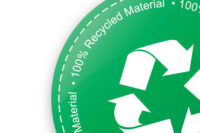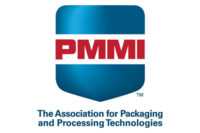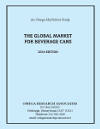Recent study findings make argument for market-based recycling system
Minnesota-based Recycling Reinvented releases new paper supporting Extended Producer Responsibility

Recycling Reinvented (Recycling-Reinvented.org) released new results from its cost-benefit analysis study on an American system for market-based recycling that, for the first time, show a model system could achieve significant improvements in recycling rates at similar costs to current programs, while taking the financial burden for administration off cash-strapped local governments.
The study examines the projected outcomes of a model Extended Producer Responsibility (EPR) system for packaging and printed paper (PPP), with Minnesota chosen as the model state due to its already well-developed infrastructure and availability of data. It was commissioned by Recycling Reinvented to provide data-backed assessments of EPR for all stakeholders, including state legislators that will be considering legislation on the matter.
“Many advocates, both for and against, are making arguments based on theory or models from other countries that have implemented EPR for packaging and printed paper but no one has yet to do a truly data-rich analysis of how a system designed uniquely for America could work,” says Paul Gardner, Recycling Reinvented executive director and former Minnesota state representative. “We commissioned this study to ensure that business, environmental and legislative stakeholders can consider the issue from an informed position.”
The second working paper released today offers the first look at the potential outcomes of an American-model EPR for PPP. Based on an extensive analysis of waste stream data from the Minnesota Pollution Control Agency, costs and efficiencies of existing local programs, the outcomes of similar programs, and the successes of best-practice programs throughout Minnesota, a model EPR system is projected to have a significant positive impact on recycling rates of packaging and printed materials at costs comparable to the existing system.
The model system scales up best practices around the state, such as implementing single stream recycling statewide, expanding curbside recycling to nearly 90% of households, establishing a more robust away-from-home recycling program and optimizing processing infrastructure to leverage existing investments in state-of-the-art technology. Data shows that such a model could increase the recycling rate of packaging and printed paper by 32%, while efficiencies and savings from a statewide standardization of material collection and technology keep the cost per ton of recycled material equivalent to today’s system.
“This is an important rebuttal to those who claim that Minnesota, or the United States as a whole, have peaked our recycling potential without significant operational cost increases,” says Gardner. “More importantly, it’s a demonstration of why businesses facing an impending commodity crush for these valuable materials have a clear incentive to take on the management of America’s recycling through EPR, to see these best-practices expanded and administered with the efficiency of the private sector marketplace.”
Recycling Reinvented and its partners, which include Nestlé Waters North America and New Belgium Brewing Company, argue for a business-led EPR system because companies have a significant financial interest in having PPP recycled in greater quantity and quality but are hampered from impacting change due to the fractured, locally driven system that currently exists.
Paul Gardner will discuss the merits of an American EPR system for PPP along with the latest study results tomorrow, January 14, at an informational hearing in the Minnesota State House Environment, Natural Resources and Agriculture Finance Committee at 1:00 p.m. CST in Room 5 of the State Office Building. The third and final working paper, which will outline the potential materials fees producers will assess to finance a model EPR system, is scheduled to come out in late February. The study is being performed by Reclay StewardEdge.
Looking for a reprint of this article?
From high-res PDFs to custom plaques, order your copy today!








